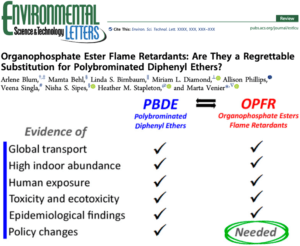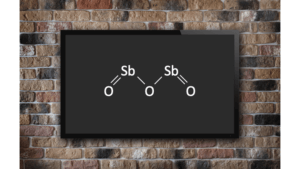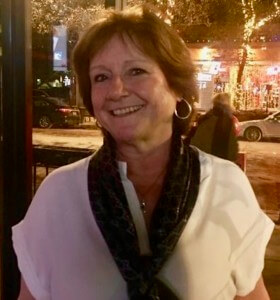December 2019: Forecast: Fluorine-Free Flurries
In this edition:
- Flame Retardant Dilemma and Beyond 2020
- A Non-Toxic Winter Wonderland?
- Volatile Voles
- Sinister Synergists
- New Flame Retardants, Old Problems
- Welcome Our Newest Team Member – Candy Kasalo
- CALENDAR

Arlene has been enjoying a well-deserved vacation in Indonesia, so this month’s update comes to you from the rest of the Green Science Policy Institute staff. While the views from our desks may not be as picturesque as coral reefs, the future is looking bright for healthier products in 2020.
Have you seen the legal thriller Dark Waters yet? The film depicts attorney Rob Bilott’s fight on behalf of Ohio Valley residents whose water was contaminated with PFOA by a DuPont factory. The movie shines a light on an open secret — many chemicals in commerce are basically unregulated, and the consequences can be devastating. You can reduce your own exposure and support impacted communities, like the one in the film, by choosing to purchase PFAS-free products. We have a growing list at PFASCentral.org. The film has received excellent reviews, and we’re hopeful that it will raise awareness of “forever chemicals” and our dysfunctional chemical regulatory system. For tickets and cities: https://darkwaterstickets.com.
While the silver screen reminds us how difficult it can be to regulate even one harmful chemical, Congress is currently considering proposals that would regulate the entire class of PFAS. The military often uses PFAS-containing firefighting foam, which has caused widespread groundwater contamination and exposure concerns for service members. That’s why both the House and the Senate included provisions in the 2020 defense spending bill instructing the military to phase out these problematic foams. This is one of several PFAS provisions receiving pushback, but Speaker Pelosi signaled she won’t bring the bill to the House floor without strong new PFAS protections. As we’ve been saying for months, we should know any day now whether these important provisions will become law.
As the semester comes to a close for students, retailers are also receiving grades. Forty three major companies were evaluated on their chemical policies in the annual Mind the Store Retail Report Card. The Home Depot and Lowe’s received positive marks for phasing out all PFAS chemicals from carpets and rugs that they sell. We’re proud that GSP’s work with carpet manufacturers made these policies possible. Office supply giant Staples improved its grade by setting limits for scores of harmful chemicals on its priority list. Perhaps most encouragingly, Staples designated the entire classes of PFAS, organohalogen flame retardants, and organophosphorus flame retardants as priority chemicals. Proactively preventing regrettable substitutions? That was easy!
When it comes to regrettable substitutions, one of our biggest concerns is increased use of toxic organophosphorus flame retardants in products where harmful PBDEs have been phased out. After more than a year of work, we are happy to publish a new research paper on this urgent subject with top scientists from around North America. We hope this study encourages industry to think creatively about ways to design out the need for toxic chemicals. Choosing a toxic replacement threatens our health and might require a subsequent redesign when the new chemical is regulated. You can read more about our peer-reviewed paper below.
Finally, our executive director would like to hire an executive assistant to help her with her busy workload. Please contact [email protected] for more information if that sounds of interest to you. The position is in Berkeley, California.
We hope you enjoy the holiday season.
The Green Science Policy team
Flame Retardant Dilemma and Beyond 2020

Please join the Green Science Policy Institute and scientists and advocates working to reduce the use of toxics at the annual Flame Retardant Dilemma and Beyond. Since 2007, these meetings have educated decision-makers in government and business to reduce toxics and protect our health. Register HERE.
When: Friday, Feb. 7, 2020, 8:30 AM to 4:00 PM
Where: Banatao Auditorium, 330 Sutardja Dai Hall, UC Berkeley (2594 Hearst Ave., Berkeley, CA)
Contact: [email protected]
Cost: $10 students; $25 non-profit, government, academia etc; $50 corporate & business. (Costs cover the venue, continental breakfast, lunch, & snacks.)
Register: HERE.
We hope you can join us for this fun and educational symposium. This year’s inspiring speakers include:
- Malene Teller Blume, COOP Denmark, a retailer that led Denmark to become the first country to ban the use of PFAS in paperboard food packaging
- Anna Kärrman, Professor at Örebro University, Sweden, who studies human PFAS exposure and its sources
- Jane Muncke, Food Packaging Forum, Switzerland, an expert in food packaging and health
A Non-Toxic Winter Wonderland?
by Heather Stone

As the weather turns colder and ski season approaches, many people are making plans to hit the slopes for some winter fun. Unfortunately, many of the waxes that help smooth your way down the slope contain PFAS. A recent study in Environmental Science & Technology reported higher levels of PFAS in earthworms and voles from a ski area in Norway compared to an area without skiing activities. The PFAS chemicals from ski wax can make their way into the snow, soil and groundwater below, and also up into the food chain. Previous research also showed that professional ski waxers have elevated levels of PFAS in their blood.
Fortunately, PFAS-free waxes can help you enjoy winter flurries fluorine-free. The Research Institutes of Sweden has developed waxes without PFAS for fluorinefree schussing and the International Ski Federation (FIS) will impose a ban on PFAS in waxes for all competitive ski events starting in a year. The FIS governs international skiing, including the Olympics, meaning forever chemicals should be off the slopes at the Beijing 2022 Games. Companies such as Swix and Toko already offer PFAS-free wax lines so you can enjoy healthier runs down the slopes or in the back-country this ski season.
Volatile Voles
by Seth Rojello Fernández and Joe Charbonnet

Many factors could play into our society’s mental illness epidemic: social strife and technological isolation are often cited as contributing to upticks of loneliness, anxiety, and depression. Now, a study in Neurotoxicology and Teratology suggests that toxic chemicals could also play a role.
Researchers found that prairie voles exposed to the flame retardant FireMaster® 550 became more anxious, isolated, and fearful. While anxious voles may not sound so alarming (What are voles anxious about? That the gophers will destroy my garden before they do?), the species is a model in many behavioral studies because they–like humans–are social, form partner bonds, and raise their young in pairs.
FireMaster® 550 is a mixture which contains both brominated and organophosphate compounds. Female voles exposed to this chemical cocktail were more anxious in social settings, and usually monogamous males–scandalously–lacked partner preference. While these results cannot be directly applied to humans, they do show the impact flame retardants have on developing mammals’ brains. Flame retardants such as FireMaster® 550 were once commonly used in furniture foam. Thanks to flammability standard reforms, most new furniture is made without these toxic chemicals. To learn more about flame retardants and how to avoid them, visit our Six Classes website.
Sinister Synergists
by Joe Charbonnet

Like Robin to Batman or Samwise to Frodo, the sidekick doesn’t always get the attention they deserve. When it comes to toxic flame retardants, synergists chemicals are the sidekick we shouldn’t let fly under the radar. Synergist compounds on their own don’t slow ignition, but when mixed with flame retardant chemicals, they help the flame retardants work better. And we use a lot of them: While flame retardants can make up 15% of the weight of some plastics in electronics cases, synergists can comprise another 5-10%.
Our exposure to synergists from products and dust ought to receive more attention, because these chemicals can be toxic. Antimony trioxide (Sb2O3) is the best-studied synergist. It can damage the kidneys, liver, and heart, and increase cancer risk. Fortunately, regulators are starting to pick up on the dangers. A proposed bill to regulate flame retardants in Massachusetts would ban antimony trioxide in many applications.
Future flame retardant regulations should likewise consider compounds like antimony trioxide. Just because the synergists are in a supporting role doesn’t mean our health should play second fiddle.
New Flame Retardants, Old Problems
by Rebecca Fuoco

After years of research and advocacy, dangerous flame retardants known as PBDEs have been phased out of most furniture foam, electronics, and children’s products. Unfortunately, our new found that PBDEs are being replaced with equally toxic flame retardants in many electronic products and children’s car seats.
These replacement chemicals–organophosphate flame retardants–are associated with lower IQ in children, reproductive problems, and other serious health harms. Most concerning of all, organophosphate flame retardants have been found in nearly every person studied.
And flame retardant chemicals aren’t necessary, or even effective, for reducing fire hazard in many products. These chemicals are added to meet flammability regulations. But research shows they often delay ignition only a few seconds, and make fires smokier and more difficult to escape.
Instead of replacing organophosphate flame retardants with yet another potentially toxic chemical, manufacturers should stop using flame retardants altogether. It’s time to stop playing whack-a-mole and increase fire safety in furniture, electronics, and children’s products with creative designs and inherently fire-resistant materials.
Welcome Our Newest Team Member – Candy Kasalo

We are pleased to welcome our new bookkeeper Candy to the Green Science Policy team. Candy is a lifelong accountant whose career spanned 30 years at Hambrecht & Quist brokerage firm and then at WR Hambrecht + Co., where she served as Controller and CFO. She has a BA in Accounting from Western Michigan University.
CALENDAR
Now in Select Theaters, Everywhere, December 6, 2019: Dark Waters
Be sure to go see the film Dark Waters, starring Mark Ruffalo and Anne Hathaway as Rob and Sarah Bilott. Already playing in many cities, this legal thriller will see a wider release December 6, and internationally through 2020.
For tickets and cities: https://darkwaterstickets.com.
February 7: Flame Retardant Dilemma and Beyond
Our annual meeting brings together scientists, business, government, and citizens’ groups to share information on PFAS, flame retardants, and other toxics.
When: February 7, 2020, 8:30am-4:00pm
Where: Banatao Aud., Sutardja Dai Hall, UC Berkeley (2594 Hearst, Berkeley, CA)
Information: [email protected]
Register: here.
Receive Updates By Email
Subscribe to our monthly newsletter and get these updates delivered right to your inbox!